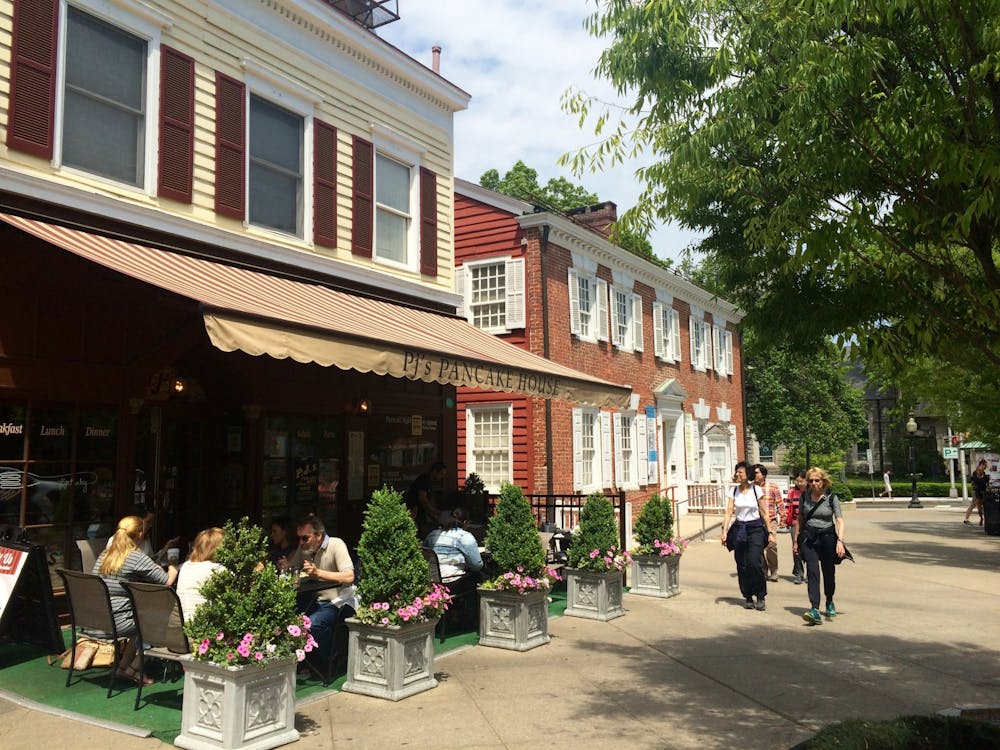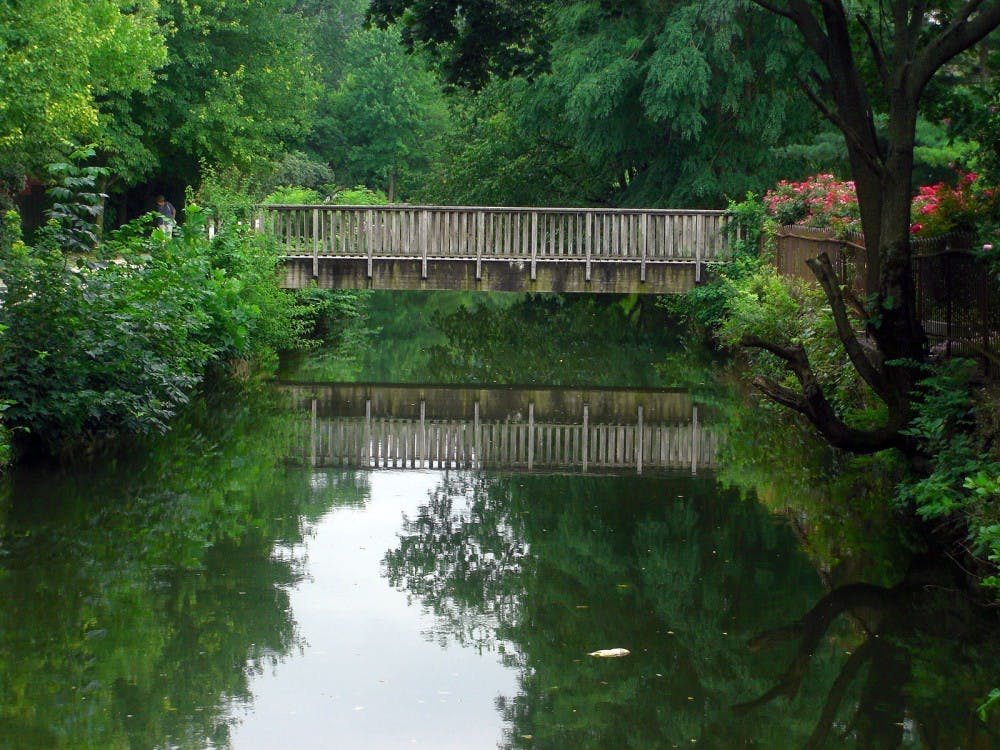These "green" roofs may replace the waffle ceilings of yore as Butler's defining feature, but they are not simply for show. Rather, they will play both an environmental and educational role as part of the University's ongoing sustainability efforts.
The roofs, made up of soil and vegetation, come as part of sustainability goals outlined in the University's 10-year Campus Plan. Princeton's Sustainability Plan, released in February, pledges to reduce carbon emissions to 1990 levels by 2020.
An environmental purpose
Butler's green roofs will mainly serve to decrease storm water runoff.
"The benefit of a green roof is that it retains rainwater," former University Architect Jon Hlafter '61 said during a discussion of Butler construction in April. "Because water is retained in the plants, it takes a lot longer for that water to get to Lake Carnegie."
In addition to the water absorbed by the rooftop soil, some of the excess water that runs off the roof will be collected and reused to sustain the surrounding landscaping, according to a Facilities Department website about the Butler project.
Butler's roofs will also offer the buildings better insulation and increase interior temperature stability, which will lead to a reduced need for heating during the winter months, according to the website. Fifty percent of the new Butler dorms will be have green roofs, while the other half will have white ballasted roofs, the website states.
Green roofs have already become popular in cities because they can also help combat the urban heat island (UHI) effect. UHI refers to the tendency of cities to be warmer than surrounding areas because of land modification and greater energy usage. Unlike most building materials, the green roofs' vegetation absorbs the sun's radiation and captures carbon dioxide, thus reducing the warming effect.
An educational opportunity
In addition to making the new Butler more environmentally friendly, the green roofs will be used for research purposes.
By installing a water-collecting instrument and sensors to measure the heat flux, soil moisture and temperature, the Princeton Environmental Institute (PEI), working with a grant from the High Meadows Foundation, plans to collect data on "how efficiently the green roof is reducing heat being held by the building and how efficiently it is absorbing and using water," explained Stephanie Hill '10, a member of Greening Princeton and an environmental studies certificate candidate.
This past summer, Hill and other students participating in the PEI-sponsored Summer Undergraduate Research Training Program found that Lake Carnegie has high nitrate and phosphate levels, the two key factors in algae growth. Through a combination of research on Butler's green roofs and research on Lake Carnegie, PEI aims to improve ecological balance and water quality on campus and in the surrounding area.

Students will also have the chance to monitor the green roofs this spring through ENV 340: Environmental Challenges and Sustainable Solutions. This course will be taught by PEI Undergraduate Lab director Eileen Zerba and will focus "on environmental challenges and sustainable solutions related to interrelationships between constructed and natural processes," including the advantages of green roofs, according to the course catalogue.
Ultimately, the new Butler dorms provide a unique opportunity to educate Princeton students in environmental issues at the same time as they contribute to the University's sustainability initiatives. And, with any luck, they can also help provide solutions to pressing environmental concerns.







